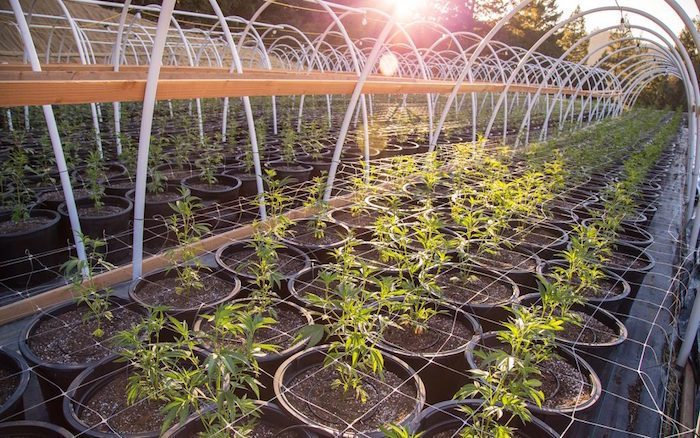Trellising is an ancient technique that helps the plant product the most fruit or flower.
Under the disco lights, some people take on a life of their own. And likewise, under grow lights, cannabis plants tend to do the same! Left to their own devices, these ladies will grow at a multitude of angles. Soon you’ll have a sprawling uneven mess that utilizes the available light inefficiently. If you have a grow operation, then using a trellis will help ensure your plants don’t get their own ideas. Just as on the dance floor, it’s those who move with grace and sway to the beat who end up succeeding. If you trellis cannabis, it helps ensure you bring some order to your grow space and allow for maximum yield.
What is a Trellis?
Typically set up outdoors, a trellis is a framed screen or net with a lattice pattern that supports or ‘trains’ plants as they grow. You can position trellises either vertically or horizontally over growing plants. Trellises were initially designed to keep vines off the ground and free from disease while maximizing yields.
Records of trellising go back to Roman times. And someone somewhere in some discrete corner of the Roman Empire may have stumbled across the technique from elsewhere. And like many things associated with cannabis, it’s that ancient wisdom that has helped enhance cannabis plant yields in modern times.
Those who trellis cannabis do so to augment efficiency within their grow space by minimizing gaps and maximizing light penetration within the canopy.

Why Trellis Cannabis?
While it may be labor-intensive, those who correctly trellis cannabis plants are rewarded with higher yields. Without a trellis, your plants will develop an uneven canopy. This leads to inefficient use of the available light, as holes in the canopy allow light to pass through those uneven patches. It becomes a missed opportunity; the leaves are unable to harness and photosynthesize the light in those gaps. Successful grow operations are defined by final yields as well as the associated costs and efficiencies of the operation. So, waste is bad – and that includes sun energy waste.
When maintained correctly, an even canopy results in the most efficient use of light. Here, all grow sites receive even exposure to the light required to produce those dense crystal buds that every grower longs for.
How to Trellis Cannabis Plants
For indoor cannabis grows, growers also call trellising ScrOG, or Screen of Green. When it comes to setting up a trellis for your cannabis plants, it’s best to use a net that can be stretched. Several types are available, both online and in home and garden stores. You can easily adapt stretchable nets to cover grows of varying sizes, so you won’t need to buy several to fit your small or growing plants.
To set up the net, secure it at the corners of the frame, and fix it 4-5 inches above the top of the canopy. Ensure it’s tight and evenly supported on each corner. This allows maximum strength in the all-important middle section. Once secured, gradually drop it down, working each corner lower and lower in turn, until the canopy rises 4-5 inches above the net.
Once the trellis is firmly in place, you can begin to bend and tuck the tops back under the net. Stretch the largest tops out toward the side. The underlying idea is to help the cannabis plants grow horizontally as opposed to vertically, thus maximizing the available area of the grow space.
Take special care during this process as the stems can easily snap. If you trellis before flowering, the stems are much easier to manipulate. This means it’s much easier to even out the canopy without damaging the plants. Trellising cannabis can be unforgiving to the amateur. But with a little practice and some perseverance, the improved yields will make it all worth it.

Via Leafly
How to Maximize Every Inch of Grow Space
Trellising isn’t a quick win. It requires daily, laborious attention.
In addition to maintaining the trellis and canopy, there is one other important technique to carry out in parallel. Selective defoliation is the process of trimming leaves not attached to a major bud site. This allows the plant to manage its resources efficiently by directing the limited energy into the main bud sites. Studies suggest a more efficient redistribution of nutrients when this process is carried out.
Doing so also ensures maximum air circulation – an important factor in preventing mold formation and in deterring bugs and pests.
In addition, cannabis plants generally require a lengthy period to recover from the defoliation that takes place in the trellising process. Trellising is best when you’re in for the long haul with a larger grow operation.
The dance floor is a much more enjoyable place when we’re all in sync and swaying to the same tune. Likewise, there’s no better sight than to see your ladies swaying in harmony to the ripple of the fan as they reach upward in unison toward those overhead lights. Happy trellising!





